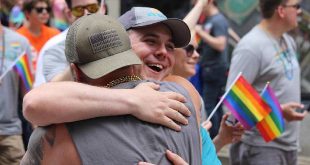In today’s society, discussions around gender have expanded beyond the traditional binary understanding of male and female. The concept of non-binary identity has emerged, challenging and redefining our understanding of gender. This article explores the meaning of non-binary, the experiences of non-binary individuals, and the significance of embracing gender diversity in promoting inclusivity and equality.
Defining Non-Binary Identity
Non-binary refers to a gender identity that does not exclusively align with the categories of male or female. Non-binary individuals may identify as genderqueer, genderfluid, agender, or other non-binary identities. They may experience their gender identity as fluid, existing on a spectrum, or outside of traditional gender constructs altogether. Non-binary individuals often reject the societal expectations and norms associated with binary gender.
Breaking Free from Binary Norms
Non-binary identity challenges the binary understanding of gender that has long dominated cultural and social frameworks. It recognizes that gender is a complex and diverse spectrum, encompassing a range of identities beyond the binary. Non-binary individuals assert their right to self-determine their gender identity and express themselves authentically.
Individual Experiences and Diversity
Non-binary experiences vary widely, as each individual’s gender identity is unique. Some non-binary individuals may experience their gender as a constant state, while others may have a fluid sense of gender that changes over time. Non-binary people may express their identity through clothing, pronoun preferences, names, or other means that align with their true selves. It is essential to respect and validate each person’s self-identified gender and their chosen expressions.
Challenges and Advocacy
Non-binary individuals often face challenges and barriers due to societal misunderstanding and lack of awareness. Discrimination, lack of legal recognition, and limited access to inclusive spaces are among the issues they may encounter. Advocacy and activism play a crucial role in raising awareness, challenging harmful stereotypes, and advocating for legal recognition and protection of non-binary rights.
Creating Inclusive Spaces
Embracing non-binary identities requires creating inclusive spaces that honor and respect gender diversity. It involves recognizing and validating the experiences and identities of non-binary individuals, using appropriate pronouns, and actively challenging binary norms. Inclusive language, policies, and practices promote a more equitable and accepting society where everyone’s gender identity is valued and affirmed.
Non-binary identity challenges the traditional binary understanding of gender, emphasizing the importance of recognizing and respecting gender diversity. Non-binary individuals navigate a wide spectrum of experiences and expressions that are personal and unique to each individual. Embracing non-binary identities requires acknowledging the fluidity and complexity of gender, challenging harmful stereotypes, and creating inclusive spaces that honor the self-identified gender of every individual. By promoting understanding, respect, and equality, we can foster a society that embraces and celebrates the richness of human gender diversity.
Disclaimer: This article contains personal opinions and perspectives of the author.
 Lesbian, Gay, Bisexual, Transgender & Intersex News Lesbian News, Gay News, Bisexual News, Transgender News, Intersex News, LGBTI News
Lesbian, Gay, Bisexual, Transgender & Intersex News Lesbian News, Gay News, Bisexual News, Transgender News, Intersex News, LGBTI News




